Wind
William “Bud” Frabell
Energy Storage
Schaltbau North America
Solar
Robert J. Munnelly, Jr.

Pivot Energy, a leading national renewable energy independent power producer, and the University of Colorado Boulder (CU Boulder), officially broke ground, Aug. 5, on a 5-megawatt direct current (MWdc) virtual net metering solar project in Weld County, Colo. The milestone marks the next phase in a partnership first announced in July 2024, and supports the university's broader clean energy goals while advancing its Climate Action Plan. Pivot Energy will develop, own, and operate the off-site project, which is expected to be completed in early 2026.
Under a twenty-year subscription agreement, CU Boulder will benefit from a virtual net metering program established by Colorado Senate Bill 21-261 in 2021, which allows the university to subscribe to energy produced off-site and receive credits on its electricity bills along with 100% of the project's renewable energy credits (RECs). The solar array will also enable CU Boulder to offset its electricity usage and advance its Scope 2 greenhouse gas (GHG) emissions goals, 50% by 2030, and achieve carbon neutrality by 2050. The initiative is cost neutral.
"This partnership with Pivot Energy is a powerful example of how CU Boulder is leading with purpose," said Chancellor Justin Schwartz. "We're not just talking about sustainability - we're building it into the fabric of our operations in ways that are both financially responsible and environmentally impactful."
Once complete, the project is expected to produce approximately 9.5 million kilowatt-hours (kWh) of solar energy annually, equivalent to powering more than 850 homes or removing 1,580 passenger cars from the road for one year. Laid end-to-end, the project's approximate 8,000 solar panels are enough to fill four football fields. Additionally, agrivoltaics will be integrated into this project. A flock of approximately 100 sheep will provide lamb-scaping services on site to manage the vegetation from April through October each year. A local rancher will benefit from additional grazing land at the project site, which will provide a diversified revenue stream for their farm operations.
"Pivot Energy is proud to partner with the University of Colorado Boulder on this project and excited to start construction," said Mat Elmore, Senior Vice President of Strategic Accounts at Pivot Energy. "This is a win-win for both Colorado's largest university and Pivot - helping CU Boulder reach its renewable energy goals, and Pivot accelerate the shift to solar energy throughout the nation."
Pivot Energy | pivotenergy.net
University of Colorado Boulder | https://www.colorado.edu/

Twentytwo & brand, a leading full-service cleantech marketing firm, has been named in the Inc. 5000 list of Fastest-Growing Companies by Inc. Business Media, a premier multimedia brand and business publication for entrepreneurs. The prestigious list honors the fastest-growing private companies by revenue, providing a data-driven look at the most successful entrepreneurial brands in America.
This is the second consecutive year that twentytwo & brand has achieved recognition in the Inc. 5000 list, with 298% growth over the past three years. The agency was also named among the Inc. 5000's top 150 fastest-growing companies in two categories: Florida-based Companies and Advertising, Marketing, and PR Companies.
"We're honored to be named for the second year in a row, especially to make the Top 150 in the advertising, marketing, and PR industry," says Nathan Rosenstein, Founder and CEO of twentytwo & brand. "These are turbulent times for clean energy, and we're committed to being a strategic partner for our clients, guiding them safely through policy changes and other challenges. As a leading full-service renewable energy marketing agency, we're proud to support our clients' important work building energy independence, grid resilience, and clean, reliable power."
This recognition follows twentytwo & brand's announcement earlier this month as one of Orlando's 50 Fastest-Growing Private Companies of 2025 by the Orlando Business Journal. Serving as the agency of record for over 100 brands in cleantech and renewable energy, the firm also serves companies across other climate and sustainability sectors, such as smart grid, electric vehicles, zero-carbon chemicals, and biofuels.
"From launching international brands into the North American market, to helping companies strategically reposition themselves forward into the next chapter in their story, we're a hands-on partner for the long-term," says Rosenstein. "Our full-service marketing integration delivers a powerful PR program and the highest quality art direction to drive results for our clients - boosting their market perception and brand equity in the clean tech sector."
Twentytwo & brand will attend RE+, North America's largest clean energy event, Sept. 8-11 in Las Vegas, Nevada. Reach out to schedule a meeting, or explore twentytwo & brand online to learn about our award-winning renewable energy marketing partnerships.
Twentytwo & brand | twentytwoandbrand.com

Oklo Inc. (NYSE: OKLO), an advanced nuclear technology company, and its subsidiary, Atomic Alchemy Inc., have been selected for three of the U.S. Department of Energy’s (DOE) reactor pilot projects under the newly established Reactor Pilot Program. Oklo was selected for two projects, and Atomic Alchemy was selected for one.
The Reactor Pilot Program aims to demonstrate criticality in at least three test reactors by America’s 250th birthday on July 4, 2026. The selections are expected to accelerate deployment timelines while providing operational insights that can support long-term commercial licensing and readiness. The program is part of a broader federal initiative to modernize and streamline nuclear licensing and demonstration, made possible through the executive orders signed in May 2025.
“We’re proud to be selected by the DOE for these three projects,” said Jacob DeWitte, co-founder and CEO of Oklo. “This shows that the DOE is ushering in a new era of building new nuclear in America by unleashing its unique capabilities to enable American nuclear innovators to build. The DOE is opening the door to the market so new ideas, new approaches, and new designs can be built more quickly and efficiently. American innovation is one of our strategic advantages, and the DOE’s selection of a number of projects provides a sweeping injection of urgency to meet the moment and unleash American nuclear innovation.”
These selections reflect growing national momentum behind energy innovation and the role of public-private collaboration in delivering bold solutions to America’s energy needs.

Best known for their applications in consumer electronics and electric vehicles, batteries power far more than our daily tools. Innovations in energy storage — the capture of energy produced at one time for later use — can protect against supply chain disruptions, reinforce the grid and foster U.S. manufacturing competitiveness.
At the U.S. Department of Energy’s (DOE) Argonne National Laboratory, researchers are advancing breakthroughs at every stage in the energy storage lifecycle. From discovering substitutes for scarce, critical materials to pioneering new, real-world applications to making end-of-life recycling more cost effective.
Energy storage offers many benefits, but it also is complicated by supply chain challenges that affect how technologies are developed and used. Over the last few decades, scientists have dramatically improved lithium-ion batteries in terms of how much energy they can store and how long they last.
As a result, they are now widely used in appliances, vehicles and on the grid. They enable the grid to be more dependable in the face of rising electricity demand and natural disasters. Lithium-ion batteries, however, rely heavily on critical elements like lithium, cobalt and nickel, which are predominantly found abroad. Consequently, battery supply chains are often vulnerable to disruption.
DOE and the national laboratories are working to protect energy infrastructure from potential supply shocks — whether from market fluctuations or national security threats. This requires safe and low-cost energy storage solutions that utilize domestic materials. To meet this need, researchers are working to improve the performance and lifespan of sodium-ion and water-based battery alternatives.
Argonne has long served as a global leader in battery science. Most notably, Argonne researchers played a key role in the development of the nickel-manganese-cobalt oxide cathode, which is in many electric vehicles today.
Currently, the laboratory is deploying artificial intelligence (AI) for materials discovery, testing cutting-edge chemistries and supporting U.S. innovation ecosystems to ensure that Argonne innovations match what the market demands.
“Batteries are a foundation for American energy abundance, and Argonne researchers can help ensure that tomorrow’s energy storage technologies are safe, efficient, long-lasting and domestically produced,” said Venkat Srinivasan, director of the Argonne Collaborative Center for Energy Storage Science and the Low-cost Earth-abundant Na-ion Storage Consortium. “Rooted in fundamental science, our approach supports the U.S. energy storage landscape through practical innovations that use a wide array of battery materials. We’re also harnessing the power of AI to accelerate the pace of discovery and leapfrog current energy storage paradigms.”
To support early-stage energy storage research, Argonne leads the Energy Storage Research Alliance, a DOE Energy Innovation Hub that includes Lawrence Berkeley and Pacific Northwest national laboratories and eleven universities across the U.S.
Argonne National Laboratory | https://www.anl.gov/
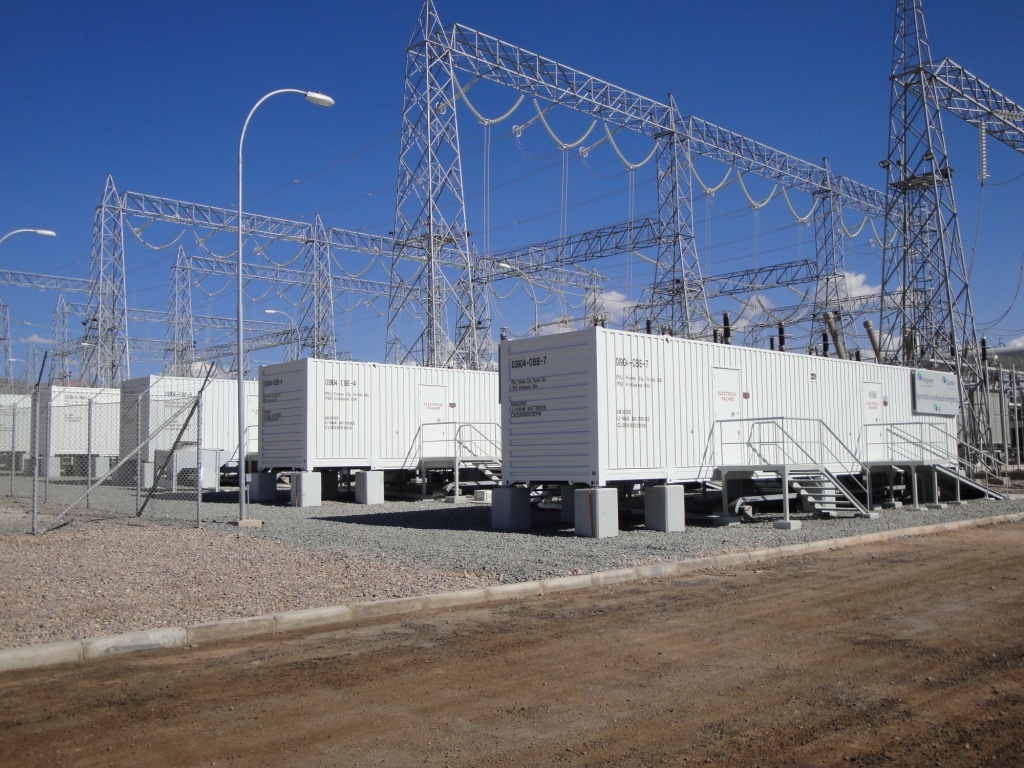
ESS Tech, Inc. (“ESS” or the “Company”) (NYSE:GWH), a leading manufacturer of iron flow long-duration energy storage (LDES) systems for commercial- and utility-scale applications, announced a significant addition to the executive leadership team with the appointment of Jigish Trivedi as Chief Operating Officer. Jigish brings over 30 years of executive experience in scaling global operations for high-growth technology companies.
“We are thrilled to welcome Jigish to the ESS executive team,” said Kelly Goodman, Interim Chief Executive Officer. “His extensive experience in the energy and semiconductor sectors, combined with a proven ability to build world-class, scalable operations, is precisely what ESS needs as we execute on our strategic pivot to the Energy Base. Jigish’s leadership will be invaluable in driving operational excellence across the organization.”
Mr. Trivedi joins ESS from Electric Hydrogen, where as Senior Vice President of Operations and Global Supply Chain, he helped scale the company from 10 to over 350 employees and was instrumental to its rise to “unicorn” status. His career also includes senior leadership roles at First Solar and Micron Technology, where he led initiatives across operations, product development, and global supply chain management.
“I am excited to join ESS at such a pivotal moment in its journey,” said Jigish. “The company’s mission to enable the clean energy transition with innovative long-duration storage solutions is incredibly compelling. I look forward to working with the entire team to build a robust operational foundation and product that will support our rapid growth and deliver for our customers worldwide.”
ESS Tech | www.essinc.com
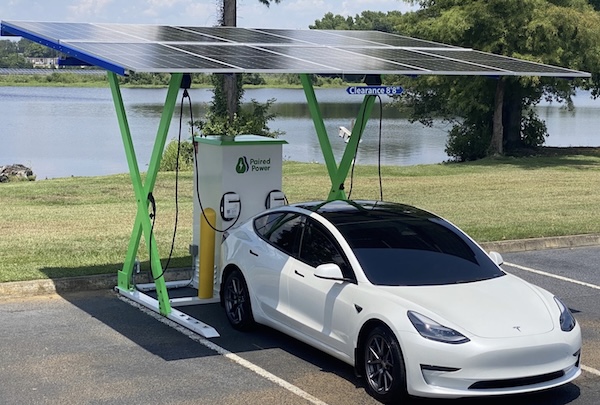
Paired Power, a leading manufacturer of solar-powered electric vehicle (EV) charging systems, announced the award of U.S. Patent No. 12,375,024 for its innovative PairTree solar canopy solution. The patent, titled “Solar canopy systems and methods,” formally recognizes Paired Power's proprietary approach to solar canopy installation, significantly expanding the deployment speed and accessibility of electric vehicle charging in situations with limited or no grid power. This marks the company’s fourth patent since 2016, reinforcing its position as the innovator in solar powered EV charging.
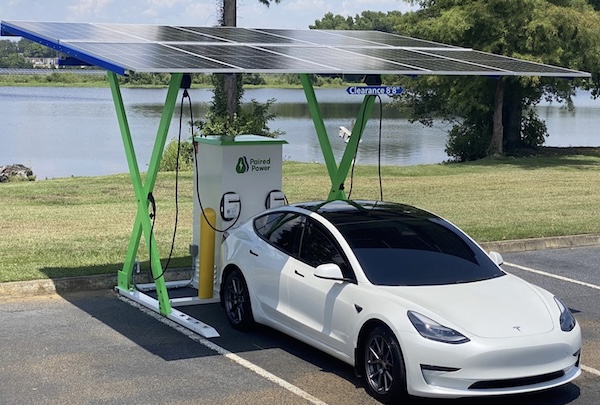
The newly patented technology covers a unique method for raising solar panels above a foundation using an integrated lift mechanism. Unlike conventional canopy installations that require elevated work, scaffolding, or external lifts, the PairTree™ system allows panels to be safely assembled at ground level before being elevated into place. This streamlined approach reduces installation time, labor costs, and safety risks, making deployment of EV charging infrastructure faster with fewer approval bottlenecks in a wider range of environments.
"Securing this patent for PairTree is a monumental achievement for Paired Power," said Tom McCalmont, CEO of Paired Power. “It embodies our commitment to making sustainable energy solutions more accessible, efficient, and deployable for everyone, everywhere. The ability to rapidly install solar canopies with minimal effort will accelerate the adoption of electric vehicles by providing charging options in previously underserved locations."
PairTree reduces installation time from weeks to hours, enabling rapid deployment with immediate functionality and minimal site disruptions. Unlike traditional EV chargers that require trenching and major construction, PairTree preserves existing parking spaces and reduces or eliminates reliance on the grid during installation.
Paired Power’s signature combination of solar power and energy storage allows PairTree to create its own self-powered microgrid, further enhancing the solution’s utility for remote, off-grid or utility-constrained locations. By generating and storing its own energy, the system also empowers operators to avoid costly demand charges often levied by utilities during peak energy use. Its modular, flexible design enables fast, cost-effective EV charger deployment where and when it’s needed most.
To learn more about the PairTree system, visit https://pairedpower.com/solar-canopy-ev-charger-pairtree/. To delve further into the company’s full suite of microgrid EV charging solutions, join Paired Power on Thursday, September 18, for a live webinar at 2:00pm EDT/11:00am PDT.
Paired Power | pairedpower.com

Situated at 1664 W. Division Street, Centrum Wicker Park offers luxury living with top-tier amenities in the heart of one of Chicago's most dynamic and lively neighborhoods. These contemporary residences are designed with sleek floor-to-ceiling windows, offering abundant natural light and stunning city views. To achieve this while maintaining exceptional solar control, Hirsch MPG selected Solarban R67 glass by Vitro, ensuring both beauty and performance.

Solarban R67 glass (formerly Solarban 67 glass) offers exceptional solar control performance, surpassing expectations for its high level of transparency. It combines superior energy efficiency with remarkable color clarity and fidelity, precisely transmitting and reflecting ambient light and colors, ensuring true-to-life tones and brightness. Enhanced by its low interior and exterior reflectivity, Solarban R67 glass offers unparalleled crispness and visual clarity.
In a standard one-inch insulating glass unit (IGU), Solarban R67 delivers a visible light transmittance (VLT) of 54% and a solar heat gain coefficient (SHGC) of 0.29. In addition to standard clear glass, Solarban R67 glass glass can also be paired with Vitro’s low-iron substrates, Starphire Ultra-Clear glass and Acuity glass, and range of blue, green and earth-toned tinted glasses.
Centrum Wicker Park offers the perfect mix of location and style. With a Walk Score of 97, an analysis of how easy it is to complete daily errands on foot, residents have easy access to everything the neighborhood offers, including public transportation, retail shops, restaurants and green spaces like Wicker Park and Pulaski Park.
Project Credits:
· Architect: Hirsch MPG
· Fabricator: Oldcastle BuildingEnvelope
· Glazier: CK2 Contracting
· Photography: Tom Kessler
Vitro Architectural Glass | vitroglazings.com
Alternative Energies Jul 31, 2025
As energy costs rise and climate mandates tighten, building owners face mounting pressure to cut energy use and carbon emissions. With buildings accounting for about 30 percent of global energy demand, even small improvements can have a major im....

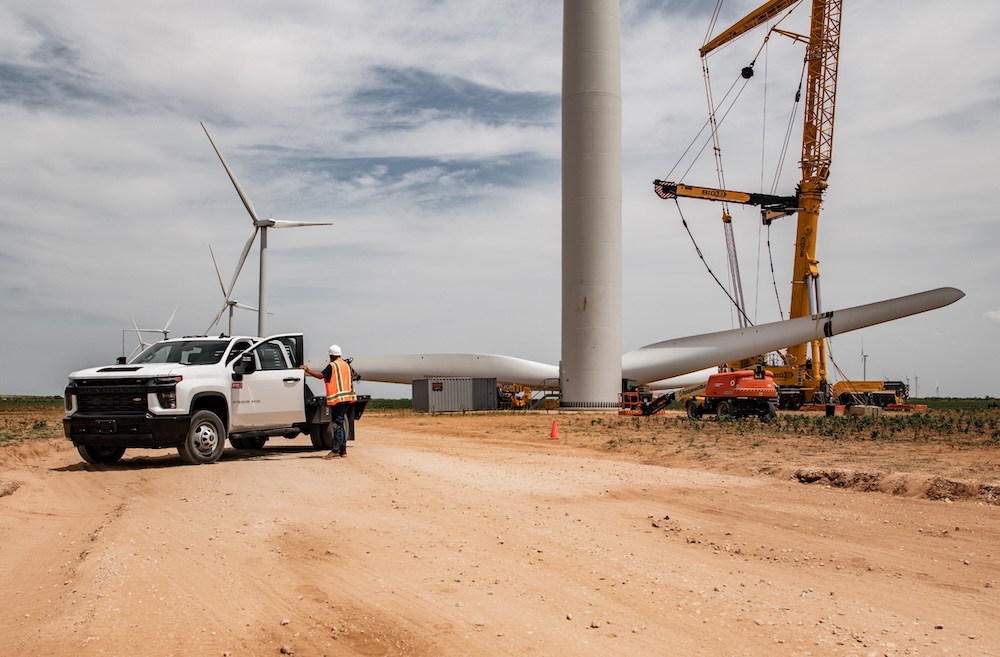
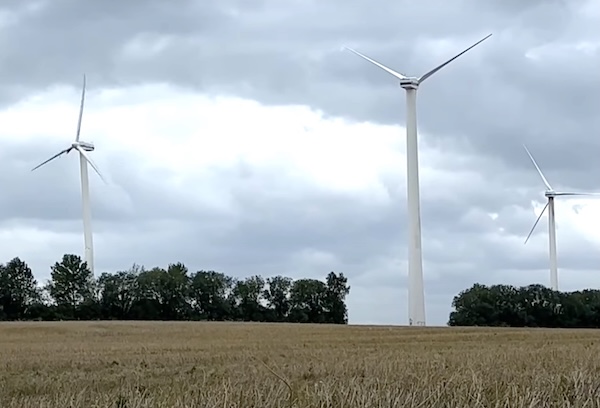
The urgent need to accelerate solar installations across the United States stands at the forefront of the nation's commitment to significantly decarbonize the energy grid in the fight against climate change. Achieving this ambitious target necessitat....
The Massachusetts legislature enacted the innovative “Solar Massachusetts Renewable Target” program (SMART) in 2016 to support use and development of solar photovoltaic (PV) generating units by residential, commercial, governmental, and indu....
In recent years, increasing climate volatility has had a significant impact globally. The United States has also experienced a range of natural disasters, including frequent solar flares and cyclones. In response, there has been a growing emphasis on....
When it comes to capital expenditure con....
Many people believe the life of a travel....
As offshore wind development intensifies....
In little more than a decade, driving an electric vehicle (EV) has gone from being a statement made by environmentally conscious drivers to a real trend fueled by advances in technology, range, reliability, and convenience. The rise in EV adoption ha....
As the global energy transition accelerates, battery energy storage systems (BESS) have become essential to grid flexibility, helping to balance intermittent renewable resources and ensure reliability. However, as storage installations age, battery d....
The energy industry is in the midst of massive change, exacerbated by a new administration and an alarming increase in demand that has characterized the past few years. Many industry experts are closely watching the Trump administration’s rhetoric,....
As energy costs rise and climate mandates tighten, building owners face mounting pressure to cut energy use and carbon emissions. With buildings accounting for about 30 percent of global energy demand, even small improvements can have a major im....
As the world rapidly electrifies, the demand for clean, scalable, and cost-effective energy storage is skyrocketing. While renewable energy sources like solar and wind offer an abundant and sustainable supply of power, much of their potential remains....
On May 22, 2025, the U.S. House of Representatives passed the One Big Beautiful Bill Act (OBBBA) by a narrow margin of 215–214, with one member voting present. The OBBBA proposes significant amendments to the Inflation Reduction Act (IRA) of 2022, ....